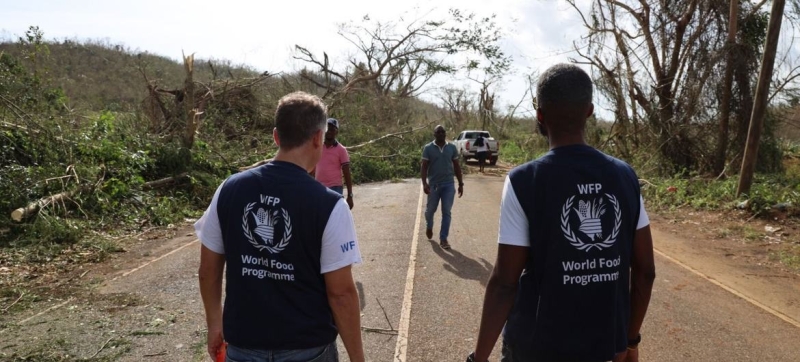- অতিথি পাখির বিচরণ আর দুষ্টুমিতে নান্দনিক হয়ে উঠেছে কুয়াকাটার চর বিজয় |
- Remittance inflow exceeds $632 million in first six days of Dec |
- 18 migrants die as inflatable boat sinks south of Greek island of Crete |
- TIB for polls manifesto vows to curb misuse of powers and religion |
- Khaleda now not fit for travelling: Medical Board |
Hurricane Melissa Wipes Out Nearly a Third of Jamaica’s GDP

Two staff of the World Food Programme assess the logistical challenges of getting aid to isolated communities in Jamaica.
Around 1.5 million Jamaicans have been affected by Hurricane Melissa — the worst climate disaster in the Caribbean nation’s history, according to the top UN development official in the region on Thursday.
Kishan Khoday, Resident Representative for the UN Development Programme (UNDP), told journalists via video conference from New York that initial damage estimates amounted to 30 per cent of Jamaica’s Gross Domestic Product, “a figure that’s expected to rise.”
UNDP estimates that nearly five million metric tonnes of debris have been generated across western Jamaica following the devastating Category 5 storm last week — roughly 500,000 standard truckloads.
Death Toll and Destruction
Authorities have confirmed 32 deaths, while nearly 36,000 people urgently require food assistance, and over 100,000 housing structures have been affected, said UN Deputy Spokesperson Farhan Haq.
At least 30 communities remain cut off, with electricity, telecommunications, and even radio signals severely disrupted in some parishes.
Mr Khoday shared the story of Keith, a resident of New Hope in western Jamaica, who sought shelter behind plywood as Melissa made landfall. When he emerged, he found his home, livelihood, and parts of his community destroyed. Mr Khoday said his experience highlights both the harsh realities of the climate emergency and the resilience of Jamaicans as they work toward recovery and rebuilding.
UN Mobilises Aid
More than 60 organisations have joined the 16-member UN Disaster Assessment and Coordination team, part of the UN aid coordination office OCHA, supporting response efforts under Jamaican authorities.
UNDP has allocated an initial $400,000 to assist with assessments and provide early support to national partners. Meanwhile, the UN World Food Programme (WFP) is airlifting food from Barbados to support more than 6,000 households for up to a week.
Communities Still Cut Off
In Cuba, which also suffered devastation along with Haiti due to the hurricane, around 120,000 people remain in shelters due to flooding, overflowing rivers, and landslides.
The UN reports that 29 communities remain isolated, with extensive damage to housing, health facilities, and schools. More than 45,000 housing structures, nearly 500 health facilities, and over 1,500 educational centres have sustained damage, Mr Haq said.

